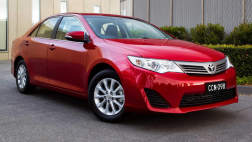The ISOFIX system is a method to provide positive location for all types of child seats, from baby capsules to booster seats, and is being assessed by major motor clubs. Car companies are also pushing for ISOFIX acceptance in Australia.
The Australian Automobile Association says there is no major safety improvement from the ISOFIX system but admits it could have benefits in installation, cutting the high incidence of incorrect installation of child seats by parents.
The NRMA has recently begun a major investigation, including tapping overseas research on installation errors.
"The major issue with all child restraints is the mis-installation of restraints and incorrect seating of children in the restraint. ISOFIX addresses (but does not eliminate) the mis-installation issue, but is no better in regard to incorrect seating of children," says Jack Haley of the NRMA. "Australian child restraints perform as well as any other types anywhere in the world. There are many recorded instances of children properly seated in a child restraint properly installed surviving very high speed crashes where everyone else in the vehicle is killed."
Some carmakers dispute the safety figures, most notably Volvo of Sweden, but the majority of importers are in favour of the ISOFIX standard being approved for Australia. It could potentially be incorporated into a future Australian Design Rule change, as the Australian Standards committee is looking into the system
But there are a number of complications, from the design and location of ISOFIX mounts - a pair of D-shaped mounts at the junction of the backrest and base of the back seat - to a conflict between the systems used in Europe, Japan and the USA.
America has a hybrid system called Latch which uses the ISOFIX base mounts but includes a top-tether similar to the one required by law in Australia. "The latch system, with its non-rigid lower attachment system, provides no real benefit over the current Australian anchorage system," says Haley.
He and the AAA are concerned that there are only requirements for two ISOFIX locations in cars, which would reduce the carrying capacity for Australian families because it is impossible to fit three child seats or boosters across the back seat.
OPINION - Paul Gover
I am a fan of ISOFIX because it vastly reduces the chance of incorrect installation of a child seat. When I bought my first baby capsule in the UK, the salesperson at the Mothercare store said the company's research points to massive errors in installation.
ISOFIX also makes it quick and easy to switch the child restraint between cars, a major bonus for a Carsguide tester. The only cars I have driven without the ISOFIX brackets are either locally made or Japanese four-wheel drives, apart from - surprisingly - an Audi A5 Sportback.





.jpg)
.jpg)
.jpg)

_0.jpg)



.jpg)
 (1).jpg)







.jpg)






